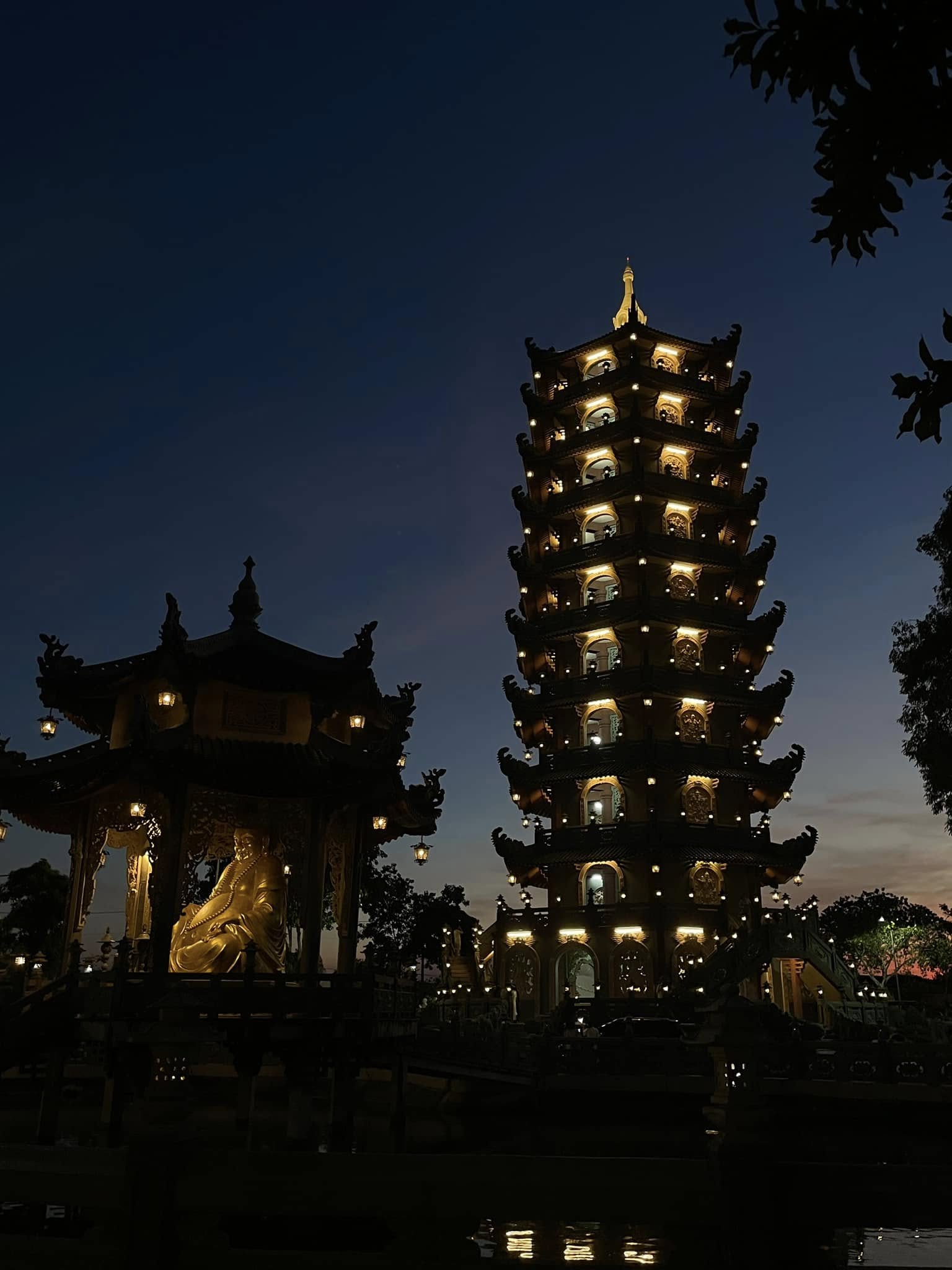In front of you is the work (Temple of Light in the Night) taken by Vuon Co Tich Mam Non and posted in 2023.
 The photograph unfolds a scene both majestic and serene, a space where light and darkness meet, where unshakable tranquility flows alongside the endless passage of time. Night has begun to fall; deep blue spreads across the sky, leaving only a faint trace of purple and pink on the horizon—the lingering breath of a sunset just closed. Against this backdrop, the temple glows, like a golden lotus blossoming in the stillness of night.
The photograph unfolds a scene both majestic and serene, a space where light and darkness meet, where unshakable tranquility flows alongside the endless passage of time. Night has begun to fall; deep blue spreads across the sky, leaving only a faint trace of purple and pink on the horizon—the lingering breath of a sunset just closed. Against this backdrop, the temple glows, like a golden lotus blossoming in the stillness of night.
On the left side of the image, a golden Buddha sits within a small pavilion, embraced by curving eaves as soft as outstretched wings. A warm golden light covers the statue, illuminating every detail of the face: contemplative, gentle, serene. The Buddha rests there, silent yet near, as if listening and holding the unspoken sorrows of humankind. Around the figure, small hanging lanterns flicker. Their light is not harsh but tender and harmonious, softening the entire space. Gazing upon the statue, one feels cleansed—as though the soul itself has grown lighter, calmer.
To the right rises a towering pagoda, soaring toward the heavens. This is the focal point of the photograph, the place where light gathers and radiates most powerfully. Built in many tiers, each level glows with evenly placed golden lamps. Together they form rings of light repeating upward from the base to the pinnacle, like steps of radiance guiding the spirit from the earthly realm to the pure. Each curved roof is graceful and fluid, yet stacked one upon another they create a monumental, solemn form. At its peak, the spire gleams sharply, as though it longs to touch the deep vault of sky—the infinite stillness above.
Between the Buddha and the pagoda, light becomes the invisible thread of connection. One side still, the other rising. One side the figure seated in calm acceptance, the other the structure reaching upward with the yearning for boundlessness. Yet they do not oppose; instead, they harmonize, complementing one another to form a whole both graceful and grand, intimate yet transcendent. The viewer feels as if standing before two doors: one opening inward, to discover peace within; the other opening outward, to ascend toward clarity and enlightenment.
Though the surrounding space is veiled in darkness, it is neither fearful nor heavy. Rather, it is this very darkness that provides the canvas upon which the temple’s light shines brighter. From the Buddha, light extends outward. From the tower, light descends. Together they merge into an island of radiance adrift upon the ocean of night. To behold this sight is to see not only the beauty of architecture, but also the beauty of spirit: a beauty unpretentious and enduring, profound enough to guide the heart toward serenity.
Even the smallest details—the lanterns suspended, the silhouettes of trees along the edges, the faint reflections in the water below—contribute to the completeness of the image. If the tower is the vertical axis of light, then the Buddha is its still center of peace. If the deep blue sky is the canvas, then the golden glow is the brushstroke that animates the painting. And within this entire space, there is no noise, no haste. Only stillness, grandeur, and a sacred presence that seeps quietly into every breath.
This photograph is not merely a snapshot of architecture; it is a fragment of emotion: the sensation of standing at the boundary between earth and sky, between light and darkness, between the ordinary and the sacred. It evokes a truth both simple and profound—that in the vast shadows of life, there is always a light to lead the way, always a refuge of peace to which one may return.










 Visit Today : 1
Visit Today : 1 Visit Yesterday : 1
Visit Yesterday : 1 This Month : 16
This Month : 16 This Year : 350
This Year : 350 Total Visit : 2300
Total Visit : 2300 Hits Today : 101
Hits Today : 101 Total Hits : 188155
Total Hits : 188155 Who's Online : 1
Who's Online : 1